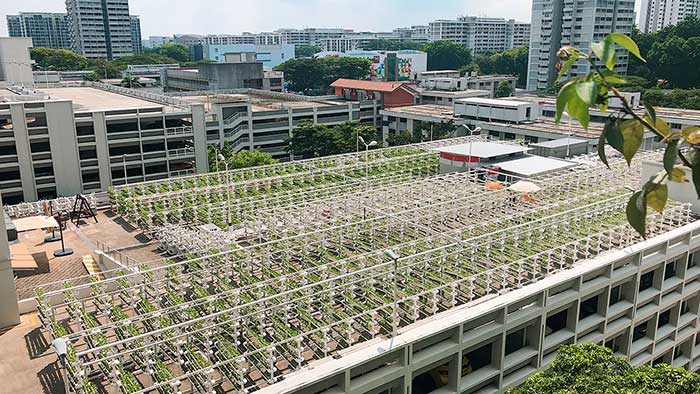The pandemic has spiked interest in smart agriculture.
Using agricultural technology or agtech, farmers are improving the efficiency of food systems, from inputs and processing to delivery and retail, said Paul Teng, adjunct senior fellow at the Center for Non-Traditional Security Studies at Nanyang Technological University Singapore.
He points to digital farming which has seen much progress during the pandemic to safeguard food production.
“Applications of remote sensors for environmental factors such as temperature, light and water quality increased. These sensors included both stationary and mobile sensors mounted on drones. Many now utilize cloud technology to send data back to a centralized processing facility which, among the more intelligent sensors, have capabilities to take action,” said Teng who is concurrently managing director of NIE International Pte. Ltd. Singapore.
In Indonesia, one new company in Java has implemented among several hundred shrimp farmers an Internet of Things system which not only monitors the water in which the shrimps grow for any danger signs, but also the growth of the shrimps and ultimately links the farmer to a potential buyer.
In Singapore, Camtech Diagnostics has created Aquafarm, a remote water management tool for aquaculture farmers, which uses wireless sensors to maintain optimal water quality for their stocks.
The remote monitoring and wireless communication system allow farmers to monitor the water quality in real-time, reduce labor costs, and increase the yield rate due to the prevention of stock loss.
In India, a startup company has enabled several hundred fish farmers with ponds and indoor tanks to optimize their stocking density of fish and increase their final harvest with minimized mortality. The company also helps the farmers secure credit from banks by providing risk profiles of the fish farmers.
“These startups are run by relatively young agropreneurs and illustrate the growing phenomenon of younger graduates entering farming by providing value-added services,” Teng said.
There are also exciting developments to help farmers make better use of increasingly scarce or expensive inputs like water and fertilizer, he added.
Precision technologies, such as drip-irrigation which are supported by the monitoring of soil moisture and plant water status, are now available in several countries. One company has even developed technology to supply chilled, oxygen-enriched water to stimulate plant growth in the tropics.
In land-strapped countries like Singapore, the number of high-tech vegetable and fish farms using vertical farming technology with multiple stacks of vegetables or fish tanks has increased dramatically during the pandemic. They are supported by digital tools to monitor the growing environment, and plant and fish growth.
The Singapore government in fact enacted a “30 by 30” strategy to produce 30 percent of its nutrition needs (vegetables, fish and eggs) by 2030.
An accelerated research and development program called the Singapore Food Story has been given incentives, such as 144 million Singapore dollars, to create new technologies that enable high-density farming.
Moving forward, these indoor plant factories will allow countries to address weather patterns attributable to climate change.
“One of the significant set of activities precipitated by the pandemic has been on e-commerce — using telecommunications and the internet to link farmers to retailers, manufacturers to traders and food and beverage outlets to consumers at home,” Teng said.
“Its growth has been spectacular in Asia as measures to control movement and reduce the spread of the virus encouraged households to use the internet to order raw and cooked food. It is likely that this practice will continue even after the pandemic has become an endemic,” Teng added.




